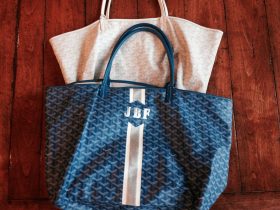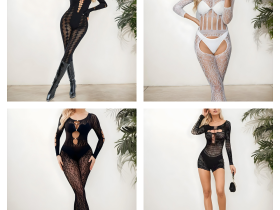The bomber jacket is a staple. Originally built for function, it now carries style, attitude, and heritage. But when it comes time to buy one, a simple question divides the room—real leather or faux?
Both have their supporters. Both carry strengths and trade-offs. Your decision depends on what you value—feel, durability, cost, or ethics. This guide breaks down the pros and cons of real and faux leather bomber jackets to help you make the right call.
What Makes a Bomber Jacket a Bomber?
Before diving into the leather debate, it helps to understand what defines a bomber jacket. Classic bombers feature:
- Ribbed cuffs and hem
- A front zip closure
- A fitted waist and relaxed shoulders
- Often, a lining for warmth
Some come with flap pockets or shearling collars. Others keep things minimal. Leather versions add weight and structure. Faux versions aim to mimic that while offering a lighter feel.
Real Leather Bomber Jackets
What They Are
Real leather bomber jackets are made from animal hides. Most commonly cowhide, sheepskin, lambskin, or goatskin. The hides go through a tanning process that turns them into wearable, durable leather.
Pros
1. Durability
Real leather holds up. It resists wear and tear better than synthetics. Over time, it doesn’t fall apart. It holds its shape and structure. A good leather bomber can last decades with proper care.
2. Character
As it ages, real leather changes. It develops creases, folds, and patina. This creates a unique look tied to the wearer’s movement and habits. No two jackets age the same way.
3. Breathability
Real leather breathes. It allows air to move through, which helps regulate body temperature. In cooler months, it insulates. In milder weather, it avoids trapping heat.
4. Premium Feel
Nothing feels quite like real leather. It’s supple yet strong. The texture has depth. It reacts to light in a natural way. When touched or worn, the difference becomes clear.
5. Long-Term Investment
The cost is high, but it spreads over time. A well-made leather bomber doesn’t need frequent replacement. In some cases, it becomes a hand-me-down or vintage piece.
Cons
1. High Price
Real leather is expensive. Full-grain and top-grain jackets cost more due to the raw materials and labor involved. This can put them out of reach for some buyers.
2. Requires Care
Leather needs maintenance. It shouldn’t be soaked. It needs occasional conditioning to prevent drying or cracking. It also needs proper storage.
3. Not Water-Resistant
Without treatment, leather absorbs water. This can lead to stains, stiffness, or damage. Water-resistant coatings help, but they don’t make it waterproof.
4. Ethical Concerns
Because it’s animal-based, some buyers avoid real leather on ethical grounds. Sustainability and animal welfare are growing concerns in the fashion industry.
Faux Leather Bomber Jackets
What They Are
Faux leather—also known as synthetic or vegan leather—is made from plastic-based materials like polyurethane (PU) or polyvinyl chloride (PVC). Manufacturers shape and texture these materials to resemble real leather.
Pros
1. Lower Cost
Faux leather is far less expensive than real leather. It offers the look without the premium price tag. For style on a budget, it’s more accessible.
2. Easier to Clean
Most faux leather can be wiped with a damp cloth. It doesn’t absorb spills the same way real leather does. This makes it simpler to maintain in everyday life.
3. Water-Resistant
Faux leather holds up better in wet conditions. It doesn’t soak up water, which helps prevent damage in rainy weather or damp climates.
4. Animal-Free
Because it doesn’t involve animal hides, faux leather appeals to people who avoid animal products. It’s labeled “vegan” by many brands.
5. Wide Variety
Faux leather comes in more finishes, colors, and textures. Brands can experiment with looks that would be difficult or costly with real hides.
Cons
1. Shorter Lifespan
Faux leather doesn’t last as long. Over time, it cracks, peels, and loses structure. Heavy use can shorten its life to just a few years.
2. Less Breathable
Synthetic materials trap heat. In warmer climates, they can feel sticky or uncomfortable. They don’t adjust well to body temperature.
3. Doesn’t Age Well
Unlike real leather, faux doesn’t improve with time. It wears out, rather than wearing in. The look stays flat and uniform until it breaks down.
4. Environmental Impact
Though animal-free, faux leather is petroleum-based. The production process involves chemicals and plastics that don’t break down easily. It raises concerns around sustainability.
5. Feels Artificial
Even high-quality faux leather doesn’t feel like the real thing. It lacks depth in texture and movement. To some wearers, it feels stiff or too uniform.
Style and Fit: Real vs. Faux
Both types can look sharp when made well. The difference lies in movement and how the material sits on the body.
Real leather molds to the wearer over time. It shapes itself through wear, becoming more personal. Faux leather holds its original form. This can be a benefit if you want a structured fit, but a drawback if you want flexibility.
Designers often add details—like zippers, pockets, and stitching—to both versions. The styling can be nearly identical. From a distance, many faux jackets pass for leather. But up close, the texture, weight, and drape give it away.
Performance in Different Seasons
Cold Weather:
Real leather insulates well, especially when paired with a lining. It blocks wind and holds heat. Faux leather can match that warmth if it’s thick, but it doesn’t breathe as well.
Wet Conditions:
Faux leather wins here. It resists water and stains better. Real leather needs treatment to withstand moisture and may get damaged if soaked.
Warm Weather:
Both types can feel heavy. Real leather breathes slightly better, but neither is ideal for summer. Lightweight bombers or perforated styles can improve comfort.
Who Should Choose Real Leather
Choose real leather if:
- You want a jacket that lasts for years
- You appreciate natural texture and aging
- You don’t mind caring for your clothes
- You want a garment that improves with wear
- You value durability and long-term investment
Real leather fits those who see clothing as legacy. It’s for people who don’t mind breaking something in and watching it grow better with time.
Who Should Choose Faux Leather
Choose faux leather if:
- You need a budget-friendly option
- You prefer animal-free products
- You live in a wet climate
- You want more color or style variety
- You expect to replace your jacket after a few years
Faux leather works well for short-term style. It fits changing trends and changing closets. It’s the right pick of cost and care are key.
Final Thought
There’s no wrong answer—only the right one for your needs. Real leather gives you time-tested quality and depth. Faux leather gives you flexibility and price. One wears it. The other wears out. One grows with you. The other fills a role for a moment.
When it comes to bomber jackets, what matters most isn’t just how it looks. It’s how it feels, how it fits into your lifestyle, and how long you want it to stay with you.
Choose the one that matches how you live, and you won’t go wrong.






Leave a Reply